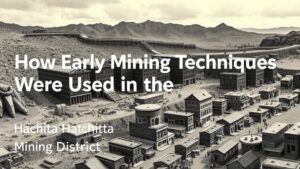Agricola’s Guidelines for Ensuring Long-Term Stability of Mining Structures
Agricola’s Guidelines for Ensuring Long-Term Stability of Mining Structures
The stability and sustainability of mining structures are essential for the safety of operations and the protection of surrounding environments. Inspired by historical texts such as Georgius Agricola’s *De Re Metallica* from the 16th century, modern mining practices still adhere to guidelines that emphasize long-term structural stability. This article delves into Agricola’s foundational principles and discusses their relevance in contemporary mining practices, backed by real-world examples and industry standards.
Understanding Agricola’s Philosophies
Agricola recognized that mining activities had significant implications on both the landscape and societal structures. He proposed several guidelines that addressed the technological and environmental challenges of his time. Key principles include:
- Attention to geological formations
- Assessment of material properties
- Useation of proper drainage systems
Geological Considerations
Agricola emphasized the importance of understanding geological formations before commencing mining operations. He argued that a detailed geological survey would prevent hazardous collapses and ensure the extraction of minerals in a safe manner. Modern mining operations conduct geotechnical assessments to evaluate the stability of rock formations and soil. For example, the 2015 Samarco dam disaster in Brazil exemplifies the catastrophic results of inadequate geological analysis and monitoring.
Material Properties and Structural Integrity
The integrity of mining structures significantly depends on the materials used in their construction. Agricola highlighted the need for selecting physically sound materials appropriate for the mining environment. Today, materials like steel and reinforced concrete are commonly used for their tensile strength and durability. The incorporation of advanced technologies like 3D modeling now enables engineers to simulate different load scenarios, ensuring structures can withstand both normal operations and unexpected events.
Drainage and Water Management
A critical aspect of Agricola’s guidelines was the implementation of effective drainage systems. He understood that managing groundwater was essential to prevent structural weaknesses caused by erosion and saturation. Contemporary mining operations utilize sophisticated drainage solutions, such as pump systems and cut-off trenches. For example, the extraction process at the Escondida copper mine in Chile utilizes extensive drainage systems to mitigate water infiltration, allowing for more stable operations.
Modern Adaptations of Agricola’s Guidelines
While Agricolas insights were grounded in the 16th century, their principles continue to enlighten current mining practices. To ensure long-term stability, mining companies can adapt these guidelines as follows:
- Integrate continuous geological monitoring systems
- Use advanced construction materials and techniques
- Establish comprehensive environmental and water management plans
Continuous Geological Monitoring
Technological advancements now allow for real-time geological monitoring, which provides critical data related to subsurface movements and stress factors that could threaten stability. Automated sensors can alert operators to potential hazards, ensuring a proactive response to risks. An example is the use of ground-penetrating radar (GPR) in underground mining operations, which aids in maintaining structural integrity by highlighting changes in geological conditions.
Adoption of Advanced Construction Materials
Modern materials science has produced stronger, more durable materials capable of resisting the unique stresses encountered in mining environments. Composite materials and geopolymers, for instance, explored for their resilience and lower environmental impact. implementation of such innovations, as seen in projects like the KGHM Polska Miedź copper mining operations, demonstrates the successful integration of these materials into mining infrastructure.
Environmental and Water Management Plans
A comprehensive environmental management plan is crucial in the mining sector. By establishing protocols for water management, companies can minimize the risk of flooding and erosion that threaten structural stability. The use of treated wastewater in mining operations, as applied in the Gold Fields’ South Deep mine in South Africa, showcases a model for sustainable practices that safeguard both mining structures and surrounding ecosystems.
Conclusion
The enduring relevance of Agricola’s guidelines reinforces the importance of thorough planning, material integrity, and environmental management in ensuring the stability of mining structures. As the industry progresses, integrating modern technology with these historical principles will result in safer and more sustainable mining practices. Mining professionals and environmental engineers alike can draw from Agricolas wisdom, ensuring that the industry not only meets today’s demands but also safeguards future generations.
Actionable Takeaways
- Conduct regular geological surveys and assessments for mining sites.
- Invest in advanced materials and construction techniques.
- Develop comprehensive water management strategies to protect mining infrastructure.



